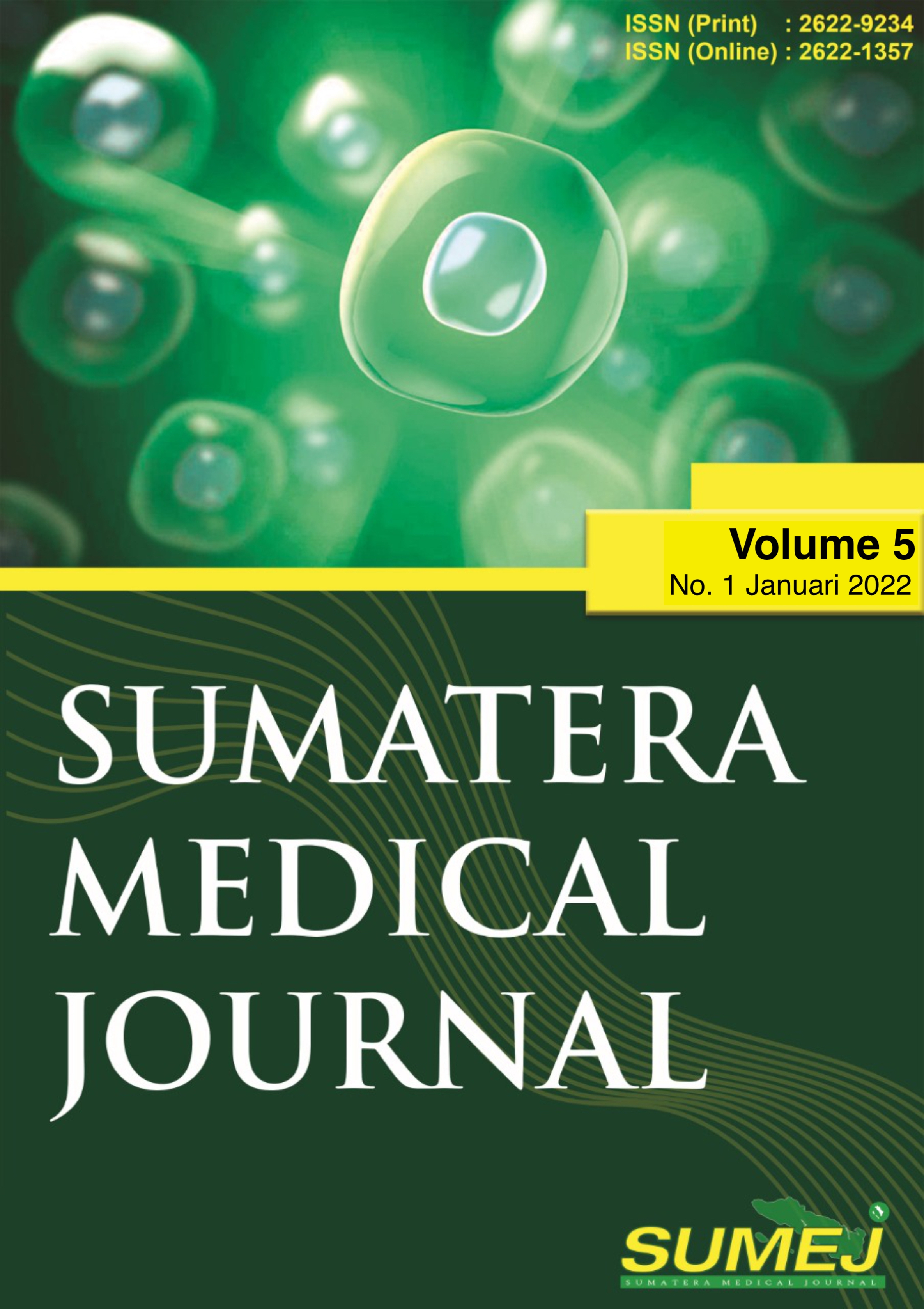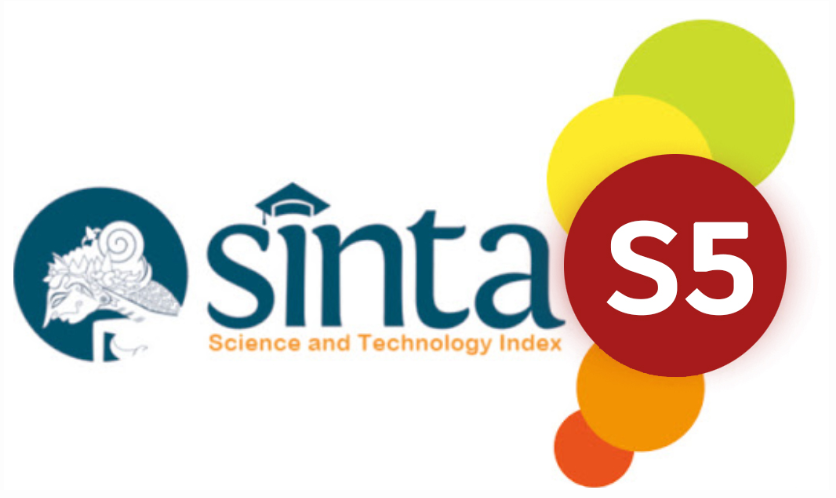The Relationship between Knowledge and Attitude with Behavior of Preventing Leptospirosis in Healthcare Workers at the Binjai City
DOI:
https://doi.org/10.32734/sumej.v5i1.7845Keywords:
Leptospirosis, Leptospira Interrogans, Knowledge, Prevention, AttitudeAbstract
Leptospirosis is an infectious disease caused by spirochete from the genus Leptospira, namely Leptospira interrogans which is pathogenic for both humans and animals. L. interrogans infection is often associated with flooding, where L. interrogans is carried from soil contaminated with animal urine reservoirs and settles in water. Leptospirosis is estimated to cause 1030000 cases and 58900 deaths annually worldwide. Until now, Leptospirosis is still a threat to public health because it causes Extraordinary Events (KLB) in several regions in Indonesia. Leptospirosis outbreaks are related to the presence of risk factors, namely the high population of rats as reservoirs of Leptospira spp., poor environmental sanitation, and the increasing number of flood areas in Indonesia. The purpose of this study was to determine the relationship between knowledge and attitude with the behavior of preventing Leptospirosis in healthcare workers at the Sub-District Health Center, Binjai Timur, Binjai City, against Leptospirosis. This research is an analytic study with a cross sectional design. The research was conducted using a questionnaire instrument of knowledge level about Leptospirosis, attitudes towards Leptospirosis, and preventive behavior towards Leptospirosis.
Downloads
References
Centers for Disease Control and Prevention, “Leptospirosis : Fact Sheet for CliniciansLeptospirosis : Fact Sheet for Clinicians,†Centers for Disease Control and Prevention, 2018. https://www.cdc.gov/leptospirosis/pdf/fs-leptospirosis-clinicians-eng-508.pdf. (accessed May 15, 2021).
K. Ryan, C. Ray, and J. Sherris, Sherris Medical Microbiology, 7th ed. England: McGraw Hill Medical, 2010.
G. F. Brooks, E. Jawetz, J. L. Melnick, and E. A. Adelberg, Medical Microbiology. England: McGraw Hill Medical, 2010.
L. Slamti, A. P. Miguel, G. Emilande, and P. Mathieu, “Deciphering morphological determinants of the helix-shaped Leptospira,†J. Bacteriol., vol. 193, no. 22, pp. 6266–75, 2011.
G. Trueba, S. Zapata, K. Madrid, P. Cullen, and D. Haake, “Cell aggregation: a mechanism of pathogenic Leptospira to survive in fresh water.,†Int. Microbiol., vol. 7, no. 1, pp. 35–40, Mar. 2004, [Online]. Available: http://www.ncbi.nlm.nih.gov/pubmed/15179605.
J. Rawlins et al., “Molecular Detection of Leptospiral DNA in Environmental Water on St. Kitts,†Int. J. Environ. Res. Public Health, vol. 11, no. 8, pp. 7953–7960, Aug. 2014, doi: 10.3390/ijerph110807953.
T. Aziz and J. F. Suwandi, “Leptospirosis : Intervensi Faktor Resiko Penularan (Leptospirosis : The Intervention of Transmitted Risk Factors),†Med. J. Lampung Univ., vol. 8, no. 1, pp. 232–236, 2019.
D. A. Haake and P. N. Levett, “Leptospirosis in humans.,†Curr. Top. Microbiol. Immunol., vol. 387, pp. 65–97, 2015, doi: 10.1007/978-3-662-45059-8_5.
K. Natarajaseenivasan, V. Raja, and R. Narayanan, “Rapid diagnosis of leptospirosis in patients with different clinical manifestations by 16S rRNA gene based nested PCR,†Saudi J. Biol. Sci., vol. 19, no. 2, pp. 151–155, Apr. 2012, doi: 10.1016/j.sjbs.2011.11.005.
L. Z. Amin, “Leptospirosis,†Cermin Dunia Kedokt., vol. 43, no. 8, pp. 578 – 9, 2016.
R. Holla et al., “Leptospirosis in Coastal South India: A Facility Based Study,†Biomed Res. Int., vol. 2018, pp. 1–5, 2018, doi: 10.1155/2018/1759125.
P. N. Levett, “Leptospirosis,†Clin. Microbiol. Rev., vol. 14, no. 2, pp. 296–326, Apr. 2001, doi: 10.1128/CMR.14.2.296-326.2001.
R. Rahimi, E. Omar, T. S. Tuan Soh, S. F. A. Mohd Nawi, and S. MdNoor, “Leptospirosis in pregnancy: A lesson in subtlety,†Malays. J. Pathol., vol. 40, no. 2, pp. 169–173, 2018.
M. Depo and K. Hari, “Risiko kematian pada kasus-kasus Leptospirosis: data dari Kabupaten Bantul 2012-2017,†Ber. Kedokt. Masy., vol. 34, no. 6, pp. 236–241, 2018.
K. Escandón-Vargas, J. A. Bustamante-Rengifo, and M. Astudillo-Hernández, “Detection of pathogenic Leptospira in ornamental water fountains from urban sites in Cali, Colombia,†Int. J. Environ. Health Res., vol. 29, no. 1, pp. 107–115, Jan. 2019, doi: 10.1080/09603123.2018.1519526.
K. Tanzil, “Ekologi dan Patogenitas Kuman Leptospira,†Widya Maj. Ilm., vol. 27, no. 324, pp. 10–13, 2012.
B. Adler, “Pathogenesis of leptospirosis: cellular and molecular aspects,†Vet. Microbiol., vol. 172, no. 3–4, pp. 353–8, 2015.
I. N. Hasanah and S. Wahyuni, “Hubungan Pengetahuan dan Sikap dengan Perilaku Pencegahan Infeksi Leptospirosis pada Ibu Hamil,†J. Kebidanan, vol. 6, no. 12, pp. 55–62, 2017.
F. Costa et al., “Global Morbidity and Mortality of Leptospirosis: A Systematic Review,†PLoS Negl. Trop. Dis., vol. 9, no. 9, p. e0003898, Sep. 2015, doi: 10.1371/journal.pntd.0003898.
World Health Organization, “Leptospirosis prevention and control in Indonesia,†World Health Organization, 2020. https://www.who.int/indonesia/news/detail/24-08-2020-leptospirosis-prevention-and-control-in-indonesia (accessed May 15, 2021).
P. Yudha and R. Rokhmayanti, “Deskripsi Epidemiologi Leptospirosis di Puskesmas Nglipar II, Kabupaten Gunungkidul, Daerah Istimewa Yogyakarta,†J. Formil (Forum Ilmiah) KesMas Respati, vol. 3, no. 1, 2018.
S. Ningsih, M. Adi, and L. Saraswati, “Systematic Review: Metode Intervensi Pengetahuan Masyarakat dalam Pengendalian Kasus Leptospirosis di wilayah Kota Semarang,†J. Kesehat. Masy., vol. 7, pp. 211–221, 2019.
S. Maulyda, “Gambaran Pengetahuan dan Perilaku Pencegahan Leptospirosis di Kecamatan Demak Kabupaten Demak,†Universitas Ngudi Waluyo, 2020.
Downloads
Published
How to Cite
Issue
Section
License
Copyright (c) 2022 Sumatera Medical Journal

This work is licensed under a Creative Commons Attribution-NonCommercial-NoDerivatives 4.0 International License.
The Authors submitting a manuscript do so on the understanding that if accepted for publication, copyright of the article shall be assigned to Sumatera Medical Journal (SUMEJ) and Faculty of Medicine as well as TALENTA Publisher Universitas Sumatera Utara as publisher of the journal.
Copyright encompasses exclusive rights to reproduce and deliver the article in all form and media. The reproduction of any part of this journal, its storage in databases and its transmission by any form or media, will be allowed only with a written permission from Sumatera Medical Journal (SUMEJ).
The Copyright Transfer Form can be downloaded here.
The copyright form should be signed originally and sent to the Editorial Office in the form of original mail or scanned document.











